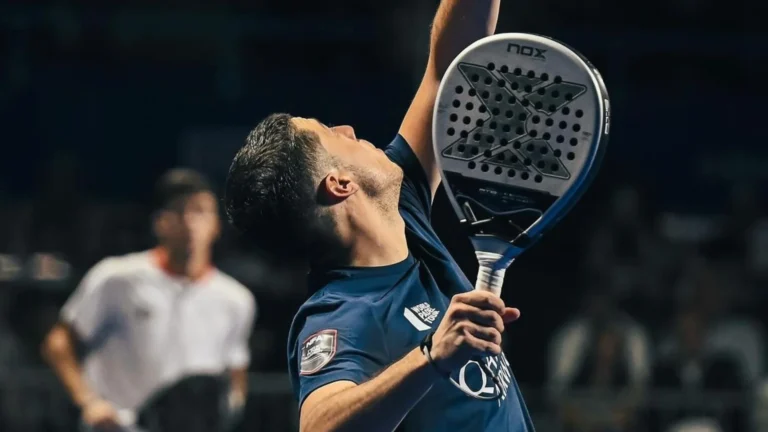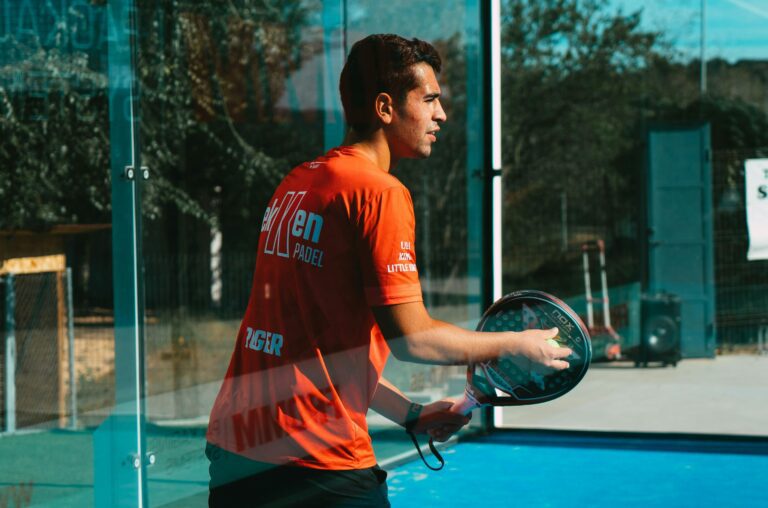When you pick up a padel racket, you might wonder what makes it feel the way it does—light yet powerful, soft yet responsive. As someone who has tested countless rackets on the court, I can tell you that what’s inside a padel racket plays a crucial role in how it performs. Understanding its inner structure can help you make better decisions when choosing a racket tailored to your game style.
Key Takeaways
- Padel rackets are made of multiple layers, including the outer frame, face, and core.
- The core material (EVA or FOAM) impacts power, control, and comfort.
- High-quality materials like carbon fiber enhance durability and performance.
- Your choice of racket should match your playing style and skill level.
1. The Frame – The Backbone of the Racket
What It Is:
The frame is the outer structure that holds the entire racket together. It’s responsible for providing durability and shape.
Common Materials:
| Material | Characteristics |
|---|---|
| Carbon Fiber | Lightweight, durable, better control |
| Fiberglass | More flexible, less expensive |
| Kevlar | Very durable, shock-absorbing |
Why It Matters:
A carbon fiber frame is popular among advanced players for its combination of lightness and strength, while beginners might opt for fiberglass frames that offer more flexibility and comfort.
2. The Face – Contact Surface with the Ball
What It Is:
The face of the racket is the area that makes contact with the ball. It usually consists of multiple layers to enhance responsiveness and durability.
Materials Used:
- Carbon Fiber: Provides more control and power.
- Fiberglass: Offers a softer feel, making it suitable for beginners.
- Graphene (in some premium rackets): Lightweight and enhances strength.
Texture Variations:
Some rackets have a rough surface for better spin, while others are smooth for cleaner shots.
3. The Core – The Heart of the Racket
Why It’s Important:
The core determines how the racket feels when you hit the ball. It affects the comfort, power, and control of your shots.
Types of Core Materials:
| Core Material | Characteristics | Best For |
| EVA Foam | Dense, offers more control and power | Advanced players |
| FOAM Core | Softer, provides comfort and absorption | Beginners, injury prevention |
Differences Between EVA and FOAM:
- EVA Foam: Longer-lasting with better power but requires more skill.
- FOAM Core: Softer touch, ideal for players needing extra comfort.
4. Layers & Protective Coating – Enhancing Durability
Most padel rackets include additional layers for protection and performance enhancement:
- Anti-vibration systems: Reduce strain on the arm.
- Protective coatings: Shield against scratches and wear.
- Extra grip layers: Help in better handling.
Which Construction is Best for You?
| Player Type | Recommended Core | Preferred Face Material |
| Beginner | FOAM | Fiberglass |
| Intermediate | EVA or FOAM | Carbon Fiber |
| Advanced/Power Player | EVA | Carbon Fiber with texture |
| Control-focused | EVA (soft) | Carbon Fiber |
Final Thoughts
Choosing a padel racket isn’t just about shape or brand; understanding what’s inside makes a big difference in how you play. If you’re looking for more power, opt for a carbon fiber frame with an EVA core. If comfort is your priority, a FOAM core with a fiberglass face could be your best friend on the court.
From my experience, the best way to find your perfect match is to test different rackets and pay attention to how your shots feel. Your playing style, skill level, and physical condition should guide your choice.
FAQs
1. What’s the difference between EVA and FOAM cores?
EVA is denser, offering more power and durability, while FOAM provides a softer feel and is more forgiving.
2. Is a carbon fiber face better than fiberglass?
Carbon fiber offers better power and control, but fiberglass is more comfortable and suited for beginners.
3. How does the racket’s frame affect gameplay?
A stronger frame, like carbon fiber, enhances durability and shot precision, while a flexible frame like fiberglass absorbs vibrations better.
4. Should I choose a textured face for spin?
If you like adding spin to your shots, a textured face can give you an edge.
5. How often should I replace my padel racket?
If you play regularly, replacing it every 12-18 months is ideal to maintain optimal performance.
#1 Resource For Padel Guides, News and Reviews Daily Stay Ahead with Expert Insights, Product Reviews, and Guides.





